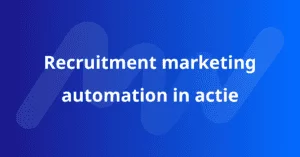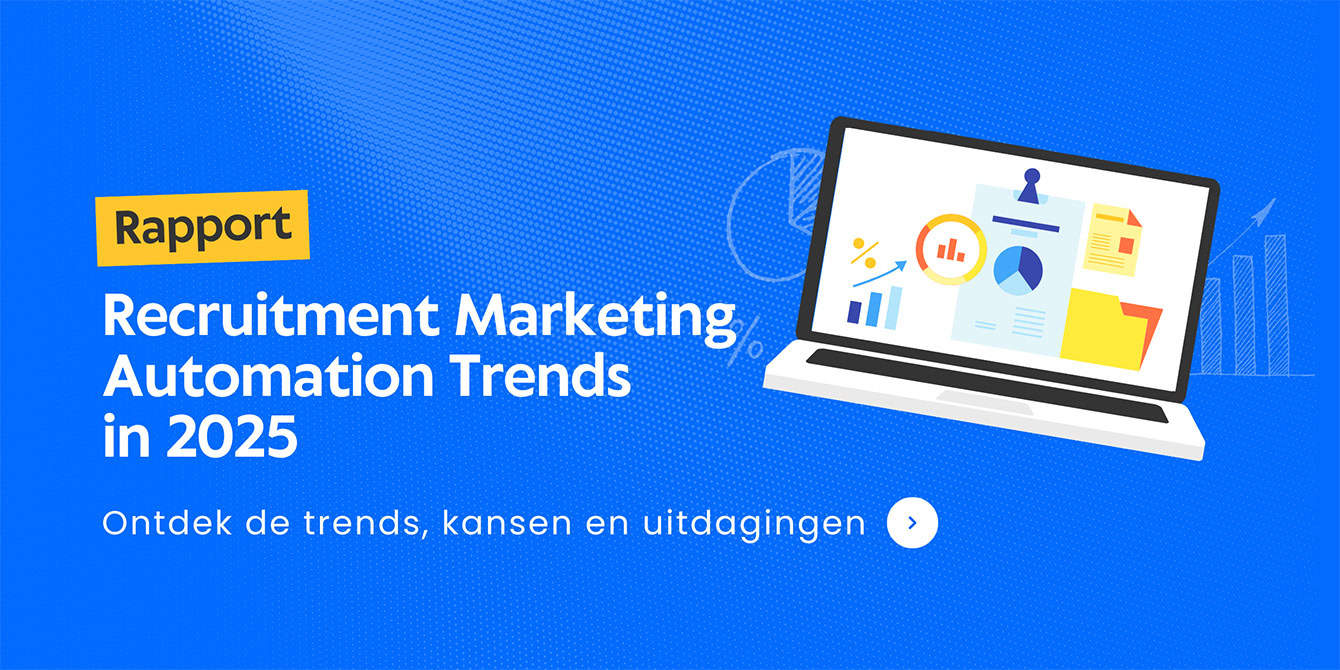You may have heard something about it recently: third-party cookies have been banned. Almost all browsers have now blocked the use of third-party cookies and Google Chrome will also phase out the loading of third-party cookies completely in the course of this year. What does this mean for the data of your recruitment campaigns? And above all, what should you do to continue measuring important data and make the right choices around your recruitment campaigns? In this blog we take you through all the developments and show you how to adapt to the cookie-free era.
What are third-party cookies?
Let's start at the beginning. What exactly are cookies and what do we mean by third-party cookies? The most important terms in a row:
- A cookie is a text file on a website that exchanges data between the server and the site. By placing a cookie, a website user can be recognized the next time he visits and settings - such as language preferences or login details - can be remembered so that the website visitor does not have to enter them again. Cookies are also interesting for marketing purposes, because they can, for example, remember which products you have previously viewed in a webshop, so that the webshop can then show you other relevant products.
- First-party cookies collect data from your website visitors, such as login information, language preferences and other settings. They are mainly used to make the website function properly. What is important with a first-party cookie is that this data may only be read by the party that placed the cookie, i.e. the website owner.
- Third-party cookies contain data from your website visitors that are combined with data from external parties, such as social media or your search behavior on Google. You've probably searched for new shoes online and seen a banner for those very shoes pop up on your screen. That's because of third-party cookies.
In recruitment marketing, third-party cookies have been widely used. For example, you can allow Meta to place a third-party cookie on your work-at-home site so you can see what someone does on your site after clicking through from the Meta ad. Third-party cookies are also used for retargeting and building similar audiences on social media. In this way, third-party cookies help optimize your campaign results because you can reach the right people and see from which channels or ads candidates actually apply. Important if the goal of your campaign is conversion (new applications)!
A new world without third-party cookies
Third-party cookies have long been controversial because they (can) infringe on people's privacy. The AVG law restricted data collection and processing, and since then more and more browsers and search engines have been banning third-party cookies. After all, they also see that their users are more focused on their privacy and are responding to this need by disabling third-party cookies.
Only at Google Chrome did they not want to do it for a long time, but after quite a bit of delay, they have now also announced the end of third-party cookies. They will be phased out this year and will no longer be collected at all by the end of 2024. This marks the dawn of a new era in online marketing - including for recruitment. Time to find other ways to run data-driven recruitment campaigns!
What happens if you do nothing?
If you keep doing what you were doing, you're going to notice this clearly in your campaign results. This is because you can no longer just create a similar target group based on your website visitors, retarget candidates based on their behavior on your work-at-home site or see what the conversion to job applications is from your campaigns. So you're going to be pretty limited!
Because you have less targeted advertising and less insight into the effect of your campaigns, you're basically throwing money into a black box. You know which channels and ads score well in terms of visibility, interaction and clicks, but everything that happens on your work-at-home site after that is a big mystery. And so you don't know which ads or channels actually generate new applicants. A bit of a gamble with your media budget!
Server-side tagging is the way to go
Fortunately, there is a workaround. A way in which you can still maintain insight into the behavior of visitors to your work-at-home site and optimize your campaigns accordingly. You do that by setting up server-side tagging, also called server-side tracking. It's a bit more technical, but basically what you do with server-side tagging is collect first-party data yourself and store it on your own server. From your server, you can then control which data is forwarded to which other tools (third-party). Note that you still need to get permission from your website visitors to collect these cookies.
First-party cookies still allow you to share data with Meta and Linkedin ad platforms, for example. This makes it possible to retarget, build comparable target groups and link campaign data to behavior on the work-at-home site. Then you do know from which channel or ad the most people apply and which ads mainly generate clicks but not applications. An important nuance when analyzing your campaign data and when making choices about optimization!
A smart investment for the future
Despite the great challenge for (recruitment) marketers posed by the cookieless era, few organizations are ready for this change. Why is that? Partly because the problem is still little experienced - Google Chrome is a widely used browser and it is only now phasing out third-party cookies - and partly because setting up server-side tagging is an investment. After all, it's not something you just set up on your own. Because of the technical complexity, you need a specialist for this and that obviously comes at a price. You will also have to buy your own server space for which you pay a monthly fee. (The amount of that monthly fee depends on the amount of data you store).
So it's a bit of an investment, but a very smart one for the future. After all, without server-side tagging, your recruitment campaigns will become less effective, costing you a lot more money in the long run.








